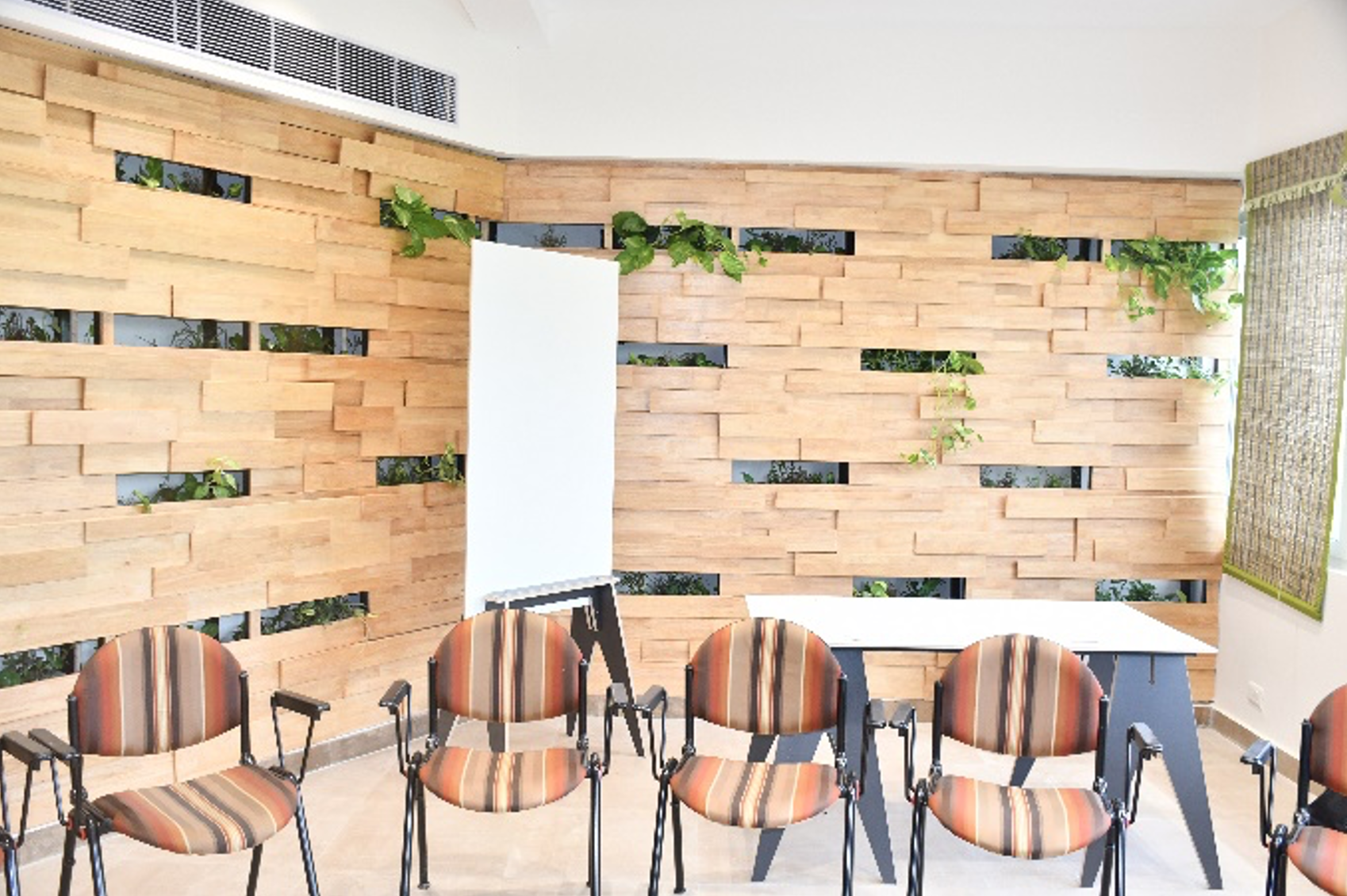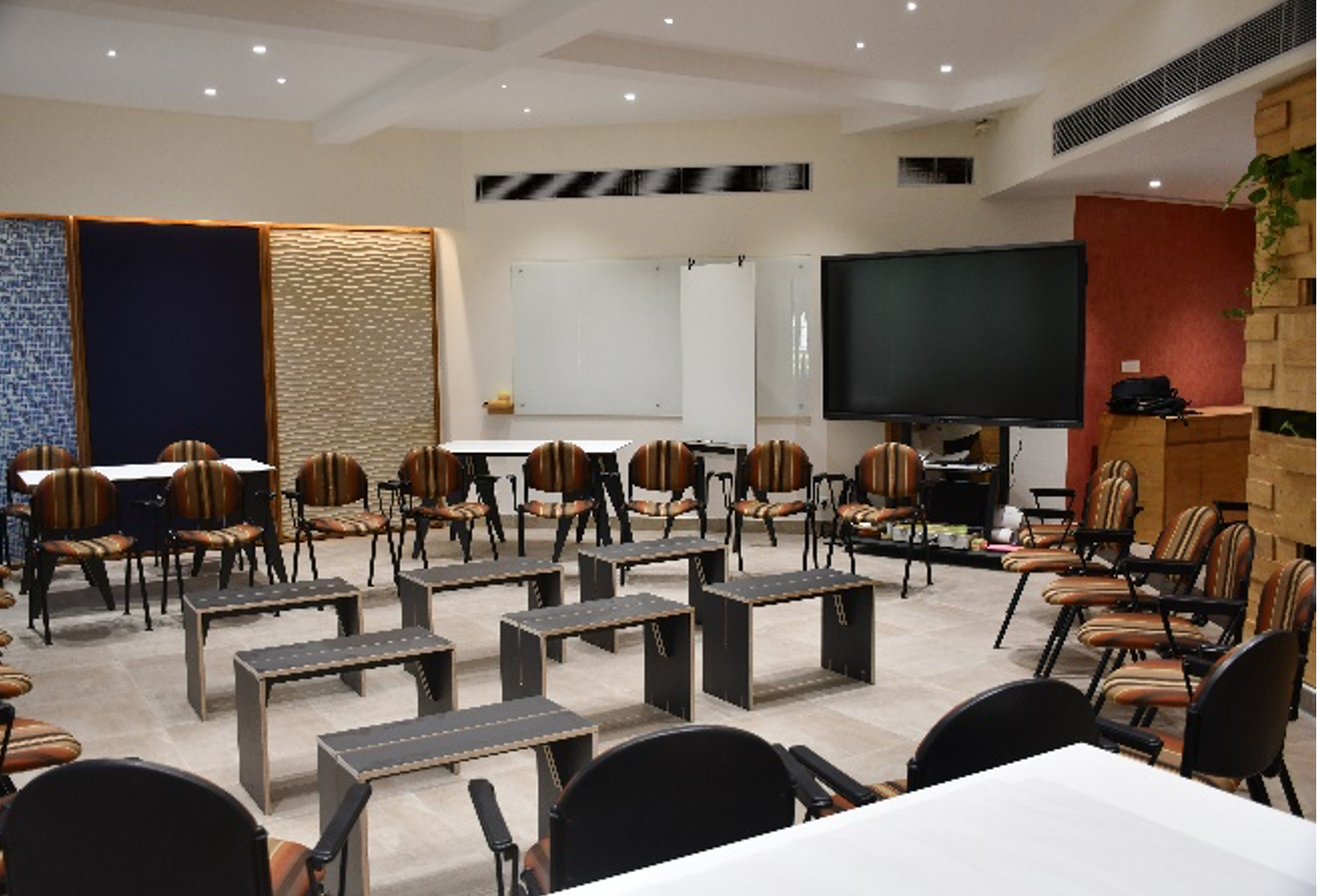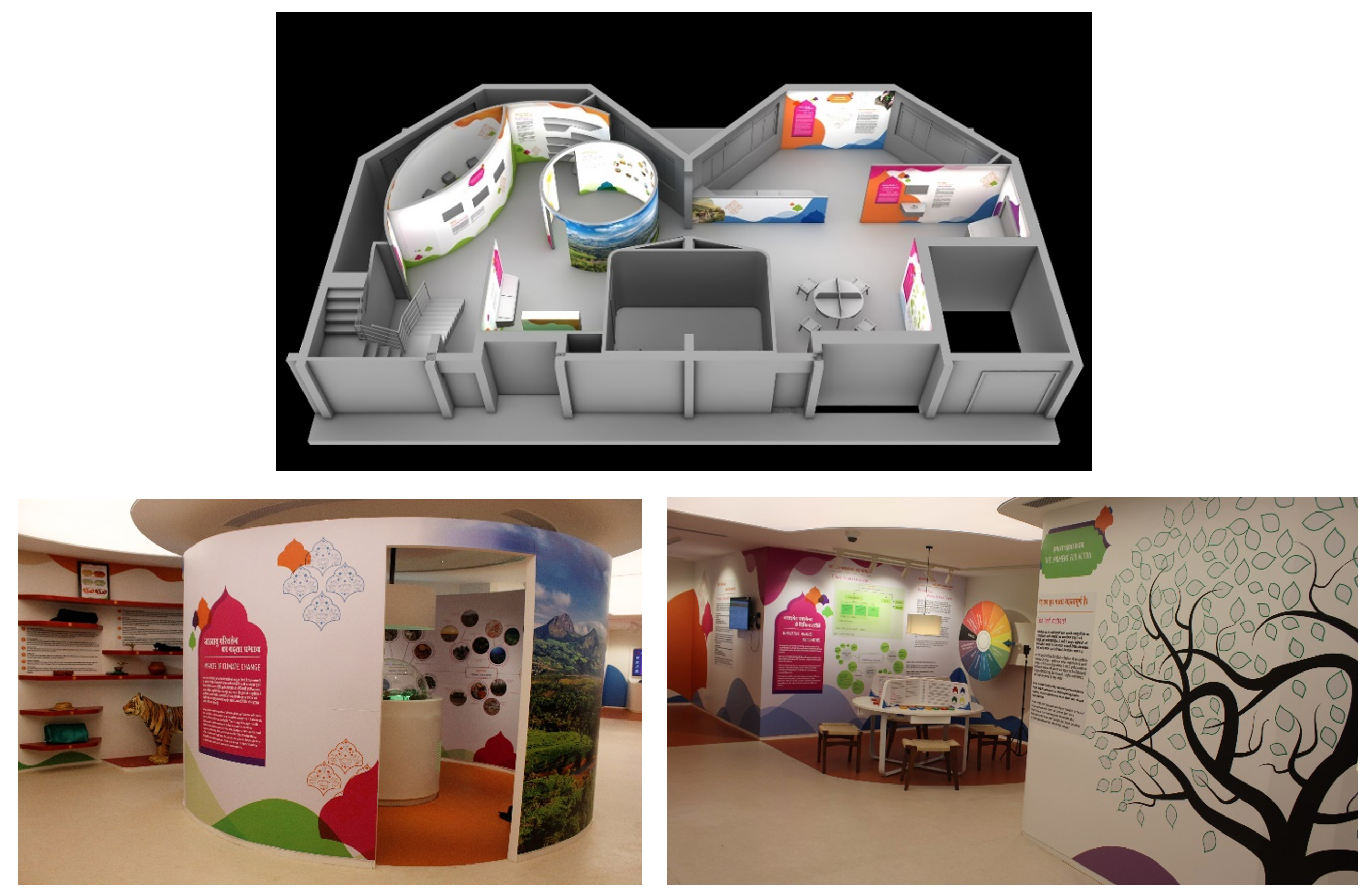Facilitating User-Centred Experiential Learning on Climate Change – Elements of Effective Learning Space
Ever thought of designing a learning space to facilitate self-learning on climate change?
As we know, multifarious efforts are being made to sensitise wide range of actors on issues related to climate change. Many of these efforts are going beyond traditional approaches for new and innovative approaches to strengthen capacities of individuals, as well as agencies to promote proactive responses on climate change issues.
NABARD with support from GIZ, established state-of-the-art ‘Centre of Excellence for Capacity Development on Climate Finance’ housed at Centre for Climate Change (CCC), BIRD, Lucknow, India. The Centre of Excellence provides a congenial and modern learning space to sensitise and strengthen competencies of government officials, trainers, bankers, and other actors; for accessing and mobilising finance to address impacts of climate change on agriculture, vulnerable communities, livelihoods etc. A flexible learning classroom and an interactive learning lab has been designed under the ongoing cooperation between NABARD and GIZ with a focus on not only to respond to learners’ needs, but also to nudge them towards critical self-reflection on issues related to climate change within the influence of their personal and professional spheres.
Technical Support for Continuous Learning
Problem-centric and active adult learning experiences promoting active participation using agile and flexible learning methods, forms the core of the Learning Classroom. The agile décor evokes the five elements in traditional Indian mythology; earth, water, fire, air and sky; drawing upon the connection to our earth and culture. These elements symbolise and encourage change in learner’s emotions while spending time in the room. The classroom fuels learners with desire to relate with the outside world and to bring nature into the room through vertical gardens, whiteboards, and mood boards. Furnished with flexible furniture such as stackable stools and transformable tables, take up little space and allows for customised learning spaces. Green walls (also known as plant walls) of the classroom represent the living environment. The classroom enables high-impact learning via mobile 83” Touchscreen panel used as learning instrument by facilitators.


Learning Classroom at BIRD, Lucknow
Pic Courtesy: BIRD, Lucknow
The innovative Learning Lab on Climate Change is designed for self-paced, interactive, experiential, and experimental learning. The aim is to sensitise users to the prevalent issues of climate change and encourage them to reflect on it. As a learning centre, innovative instruments like virtual reality films, puzzles, games, photobooths, infographic and simulation models help users to engage and explore the topics of climate change and climate finance, thus contributing to their sustainable competence development. The learning lab is divided in three learning spaces that starts with experiencing climate change, moving towards exploring solutions, and concluding with the moment for action. These three learning spaces are further divided into seven learning stations that perform the core function of the lab addressing specific topics relating to: awareness, impacts, complexity of climate change, climate finance instruments, climate projects on adaptation and mitigation etc. This learning experience is further expected to encourage initiatives and actions at individual or group level. In short, a good example of illustrating the need for new lessons, innovative approaches or methods promoting user-centred learning for capacity development for climate action under bilateral cooperation.

Learning Lab on Climate Change at BIRD, Lucknow
Image Courtesy: CF-BIRD project
A modern-day learning for competency in climate action.

